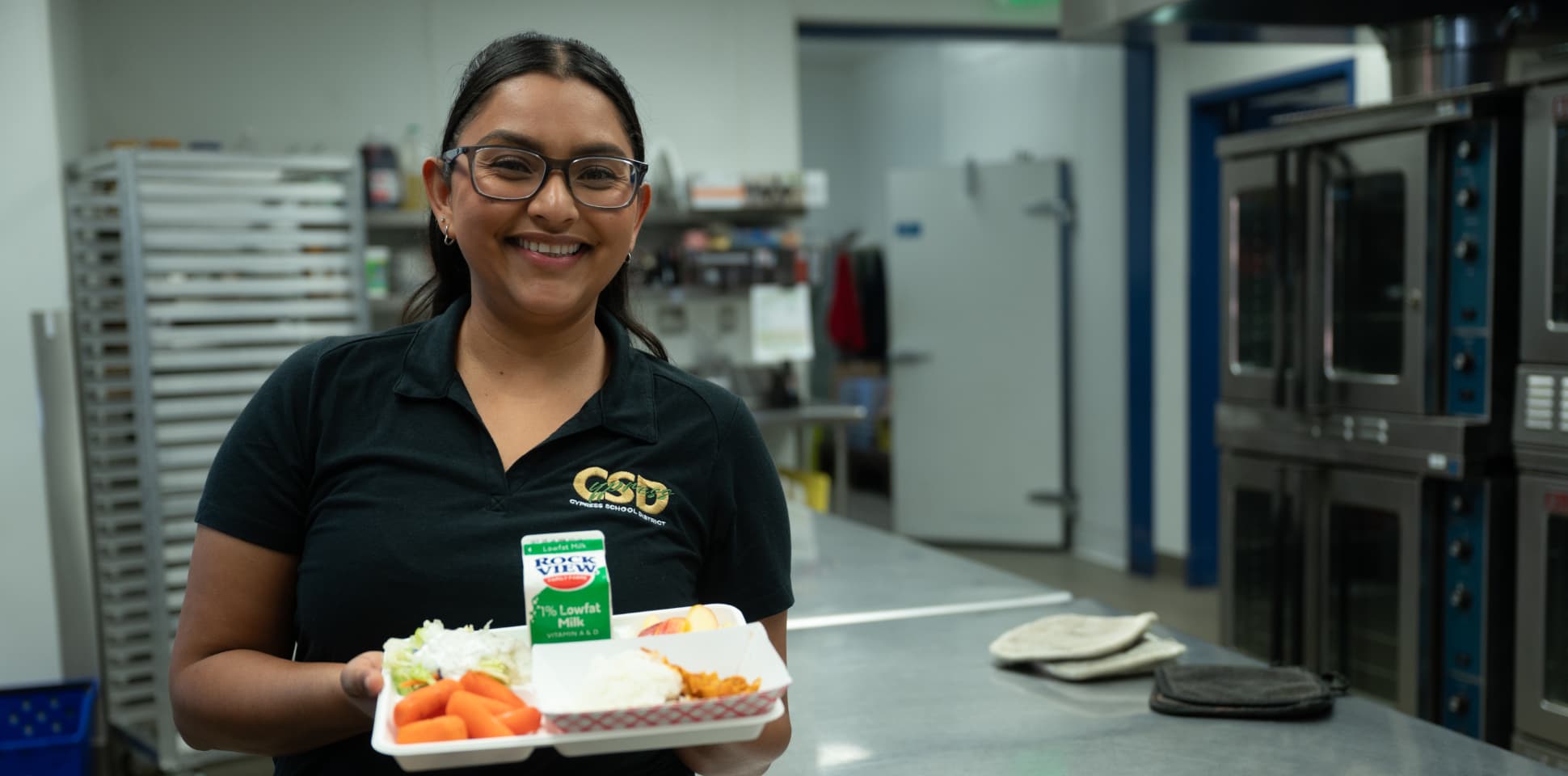Tips from the Experts: How to Get Your Picky Eater to Try New Foods
February 26, 2025
Any parent can tell you that it can be a struggle getting kids to try new foods. But helping them overcome this issue has many benefits. Studies show that kids who are exposed to diverse foods and flavors early are more likely to try new foods throughout their lives. And incorporating a diverse diet has many long-term health benefits, such as improved nutrition, longer lifespans, reduced risk of metabolic syndrome and healthier gut bacteria.
So what’s a parent to do? How do you get your child to trade in their familiar go-to dishes and try new foods? We asked the experts — two School Food Professionals who work every day to help students expand their palates and develop lifelong healthy eating habits. Here are their tips on how to turn picky eaters into brave food explorers.
- Meet them where they are: The healthiest meal in the world won’t benefit your child if it stays on their plate. So when trying to get your child to try new flavors, don’t push them too far out of their comfort zone. “You have to keep in mind that these are younger kids who might be nervous about trying something different,” said Tanya Montes, Central Kitchen Lead at Cypress School District. “For example, we dial back the heat and spice when we make salsa. That way the kids can taste the flavor profile, but it’s not going to scare them off.”
- Get creative: What do you do if your kids are scared they won’t like a new type of food? Try filling it with flavors you already know they love. Incorporating your child’s favorite flavors can give them the boost they need to try something different and possibly discover a new favorite. “When just 10 kids out of 550 tried our hummus recipe, we figured we needed a new direction,” said Parisa Shukla, Director of Child Nutrition at Cypress School District. “So we thought, ‘Why not make a dessert hummus?’” Her team kept the same healthy hummus and added a bit of chocolate and vanilla flavors that they know their students love. “The kids ended up really, really liking it,” Shukla said.
- Bring the influencers on board: When kids see their friends trying something different, they’re more likely to want to try it themselves. “School gives you a free space where you see other kids eat a new dish and you’re like, ‘Maybe I’ll give that a shot,’” Montes said. The benefits aren’t just one way, either. Incorporating diverse food choices also makes a huge difference for the kids who are seeing their cultures represented. “I’m half-Afghan, and I never saw the kinds of foods my family ate at school,” said Shukla. “When kids see dishes from their culture on the menu, it helps to normalize them, they don’t feel shy or embarrassed when they’re bringing these things from home.”
- Don’t give up: If your child just won’t eat new food, don’t get discouraged. Depending on the child, it can take more than a dozen exposures to a new dish before they are willing to try it. Once they do, they may still find it’s not to their taste, or they may discover a new favorite. “The first time we served tikka masala, a lot of our students were really unsure about it. But now a lot of them walk in and say, ‘Great! It’s tikka masala day,’” Shukla said. “And if they decided that it’s not a food they like, that’s OK, too. They can have yogurt and scratch-made granola instead.”
Everyone’s tastes are different, and not every child is going to like every food. But by being willing to try new dishes, kids open themselves up, not just to a healthier future, but to a lifetime of delicious discoveries, connections with friends and culinary cultural experiences.
